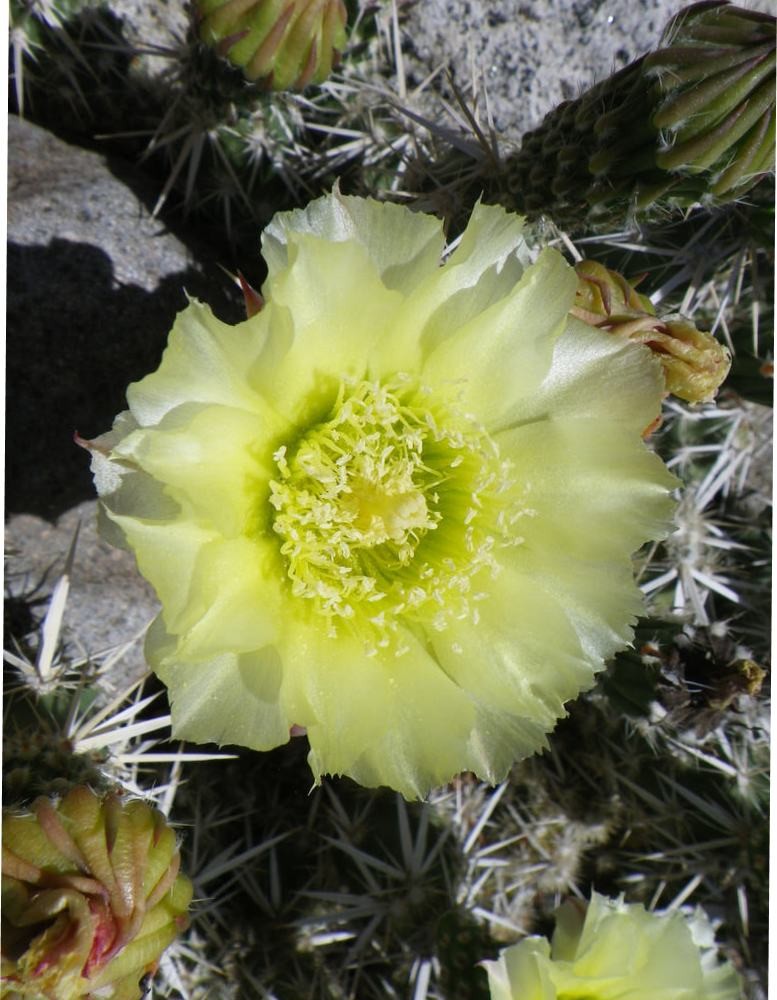Club Cholla
(Grusonia clavata)

Description
Grusonia clavata is a plant species in the genus Grusonia fromthe cactus family (Cactaceae). The specific epithet clavata means 'club-like, club-like'. Common names are "Club Cholla" and "Dagger Cholla". Grusonia clavata grows low, spreads widely and forms mats 5 to 15 centimeters high. The roots are fibrous. The short club-shaped, towards their base clearly narrowed, ovoid bumpy shoot sections are 2.5 to 7.5 centimeters long and have a diameter of 1.5 to 3 centimeters. The circular areoles are covered with white to gray wool and yellowish-white glochids, which are up to 4 millimeters long on the upper areole parts. The seven to 15 white to yellowish to ocher spinesare mostly located on the areoles near the tips of the shoots. The thorns are ascending, edged flattened to almost circular. Of the lower spines, three to five are curved downward, white, and 1.2 to 3.5 centimeters long. The longer ones are sword-shaped. The bright yellow flowers reach lengths of up to 2.5 centimeters. The barrel-shaped to ellipsoidal, yellow fruits are fleshy and covered with glochids. They are 3.5 to 4.5 centimeters long and have a diameter of 1.5 to 2.5 centimeters. Grusonia clavata is distributed in the Great Plains grasslands of the United States and northern and central Mexico. The first description as Opuntia clavata was in 1848 by George Engelmann. Harold Ernest Robinson placed the species in the genus Grusonia in 1973. Other nomenclatural synonyms are Cactus clavatus (Engelm.) Lem. (1868), Cylindropuntia clavata (Engelm.) FMKnuth (1930) and Corynopuntia clavata (Engelm.) FMKnuth (1936). In the IUCN Red List of Threatened Species, the species is listed as "Least Concern (LC)". H. listed as not endangered. The development of the populations is considered to be stable. Grusonia is a plant genus in the cactus family (Cactaceae). The genus' botanical name honors German inventor and entrepreneur Hermann Gruson. The plants are either short-cylindrical and form groups or shrubby or tree-like. The roots are usually turnip-like, but sometimes fibrous. The shoots are usually divided into cylindrical to spherical segments, which sometimes have bumpy ribs. Hair, spines and glochids arise from the areoles. The pink, purple, yellow or white flowers appear laterally or almost at the top of the shoot and open during the day. The dry or fleshy fruits are sometimes chapped and often sterile. They contain whitish to yellowish seeds about 2.5 to 5 millimeters long.
Taxonomic tree:







